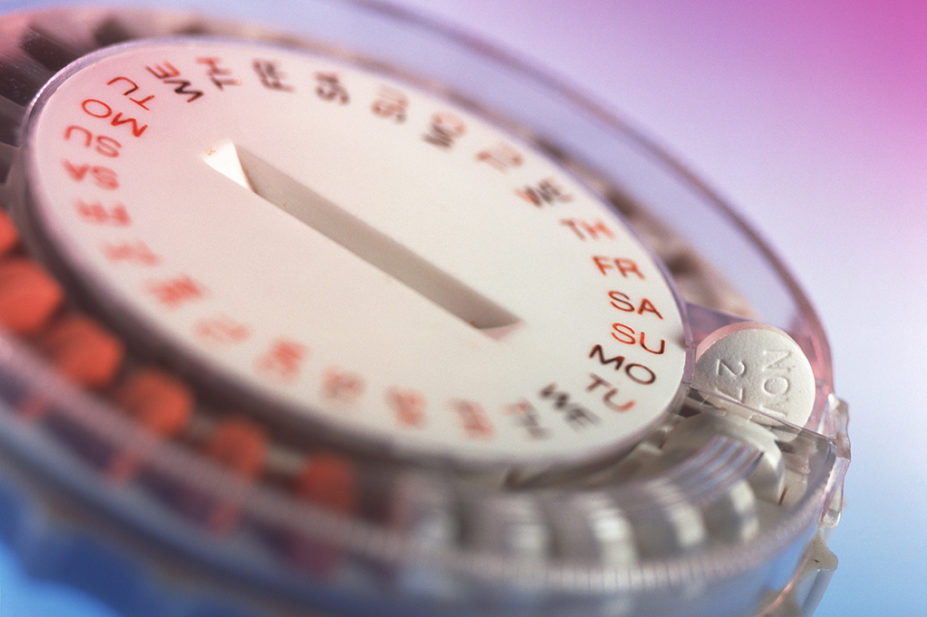
SHEILA TERRY / SCIENCE PHOTO LIBRARY
As general awareness of menopausal symptoms has increased, there has been a rapid rise in prescriptions for hormone replacement therapy (HRT), which is — of course — a good thing, as more perimenopausal women than ever are able to seek help to control their symptoms.
However, experts are concerned that women are being prescribed too high a dose in some cases, or prescribed unlicensed treatments by private clinics, putting them at risk of serious side effects.
Here, we examine these claims and consider the evidence on both sides of the argument, to assess if HRT is being overprescribed or whether this rise in prescribing is justified.
The case for:
There are certainly many more women taking HRT, with an estimated 1.9 million patients prescribed HRT in England in 2021/2022, compared with 1.5 million patients in 2020/2021 — an increase of nearly a third.
This increase has been partly attributed to a change in the willingness of GPs to prescribe HRT for women aged under 60 years with menopausal symptoms, such as low mood, following a change in National Institute for Health and Care Excellence (NICE) guidance in 2015[1].
Also, HRT access has become a cause célèbre in the media, with celebrities speakling publicly to give perimenopausal women more confidence to seek support from their doctors.
Patients shouldn’t feel that they have to have HRT and that’s been lost somewhere
Paula Briggs, a consultant in sexual and reproductive health at Liverpool Women’s NHS Foundation Trust and chair of the British Menopause Society
However, in some cases this has resulted in women not understanding that they have a choice, according to Paula Briggs, a consultant in sexual and reproductive health at Liverpool Women’s NHS Foundation Trust and chair of the British Menopause Society (BMS). “They shouldn’t feel that they have to have HRT and that’s been lost somewhere,” she says. “We should be promoting choice about how women manage the menopause.”
Specifically, Briggs says the media coverage has made it a challenge to move women away from transdermal HRT treatments. “They’re being battered by information on social media about transdermal being the safest delivery route, which is true, but if you’ve got somebody who has no risk factors, then actually they could use an oral product without any difficulties.”
Testosterone has also been championed in the media as a menopause treatment, although it is currently only licensed as a treatment for low libido. “It’s massively overused,” says Briggs. “Not all women need testosterone but it’s being classed as the missing link and then patient expectations are not accurate.”
Randomised clinical trials of testosterone to date have not yet demonstrated the beneficial effects of testosterone therapy for cognition, mood, energy and musculoskeletal health and, in some cases, using too much testosterone can have irreversible side effects, such as voice and hair changes.
In 2022, the BMS published recommendations advising that a trial of conventional HRT is given before testosterone supplementation[2].
However, it is not just the number of prescriptions that are on the up, the doses of HRT being prescribed, specifically by private providers, also seem to be rising.
In December 2022, The Pharmaceutical Journal revealed that patients attending private menopause clinics were being prescribed oestrogen at up to double the recommended dose, without opposing progesterone to prevent complications.
I have seen recommendations to increase the oestrogen dose while simultaneously reducing progesterone below recommended minimum levels
Brendan Jiang, a senior clinical pharmacist for North Oxfordshire Rural Alliance Primary Care Network
“I have seen recommendations to increase the oestrogen dose while simultaneously reducing progesterone below recommended minimum levels,” says Brendan Jiang, a senior clinical pharmacist for North Oxfordshire Rural Alliance Primary Care Network (PCN).
Haitham Hamoda, immediate past chair of the BMS, says that in the “exceptional cases” where you are prescribing a higher dose of oestrogen, it is essential to make sure that the progesterone is opposing what is being given.
“If you’re putting someone on higher doses of oestrogen and you’re not opposing that properly, you are putting the patient at an increased risk of hyperplasia and cancer,” he says.
NICE recommends that the prescribers should offer the lowest dose of oestrogen that controls the patient’s menopausal symptoms for the shortest possible duration[3].
The case against:
Some experts argue that there are cases where higher than recommended doses of HRT may be warranted.
Magnus Harrison, chief medical officer at Newson Health Group — the largest private menopause clinic in the UK — says that some women need higher doses of oestradiol because absorption of oestrogen through the skin is “variable”.
“Some women need higher than the licensed doses to achieve a physiological level of oestradiol,” he explains. “Low oestradiol levels in the menopause are associated with increased risk of diseases, such as cardiovascular disease, osteoporosis, type 2 diabetes [mellitus] and dementia.”
There are also some indications where high levels of oestrogen HRT are needed to achieve a physiological response.
Richard Quinton, a consultant endocrinologist at Newcastle-upon-Tyne Hospitals, uses younger women with hypogonadism — a condition in which the ovaries do not function properly — as an example.
“In these individuals, standard preparations even at the higher-end of menopause HRT dosimetry fail to achieve healthy serum oestradiol levels in around 50% of cases, which is rather worrying in terms of their bone density, sexual health and, potentially, cardiovascular risk,” he explains.
“The other situation where HRT may be prescribed at higher doses and adjusted according to serum levels is in transgender medicine.”
In these two groups, he says, HRT may continue for many decades, requiring periodic monitoring in order to ensure an appropriate serum oestradiol level is achieved and to keep an eye on bone health.
It seems like some of the private menopause doctors have also started monitoring oestradiol levels and adjusting the treatment dose accordingly, but whether this is justified in that context too is likely a matter of debate
Richard Quinton, a consultant endocrinologist at Newcastle-upon-Tyne Hospitals
“It seems like some of the private menopause doctors have also started monitoring oestradiol levels and adjusting the treatment dose accordingly, but whether this is justified in that context too is likely a matter of debate.”
And, when it comes to adequate progesterone protection, Quinton says that the data around the best dose of progesterone needed to achieve endometrial protection are “largely historical”.
“Nobody actually knows whether a higher dose is needed when the oestradiol dose is increased, although it makes intuitive sense,” he adds.
“The assumption is that endometrial protection on cyclical HRT is achieved when there are regular withdrawal bleeds and, on continuous combined HRT, when there is no breakthrough bleeding, spotting, bloating, or cramping discomfort.”
Harrison agrees: “The data regarding actual dose of progesterone to provide adequate endometrial protection [are] not robust. At Newson Health clinics, we ensure that women are regularly followed up, at least annually, and we ask that any vaginal bleeding is reported.”
Mitigating factors
Although, in some cases there may be overprescribing, there are also many cases where women are not able to access the HRT they need.
The All-Party Parliamentary Group on Menopause says that barriers, such as the cost of prescriptions and the inability of many healthcare professionals to effectively diagnose and treat menopause symptoms, stand in the way of equitable access to HRT. In October 2022, the group recommended a national formulary for HRT, alongside 12 other recommendations, to help improve the situation.
In March 2022, the government announced that a single annual prepayment of £18.70 for HRT prescriptions would be introduced in April 2023. The scheme was first announced in October 2021 and promises potential savings of up to £205 by enabling women to pay one charge for a 12-month supply of HRT.
However, the time frame for implementation was met with disappointment, with some having been led to believe the scheme would happen in a matter of months.
Carolyn Harris, a Labour MP for Swansea East, said that “many women” were frustrated by the delay and the continued need for them to pay for their prescriptions to be fulfilled each month.
Access has also been further compounded by shortages of HRT that have been causing problems in the UK since 2018, causing many patients to struggle to get access to the drugs they need during this time.
Our verdict
It is evident that there are cases where HRT is being overprescribed; specifically, private providers being prescribed doses above the licence recommendations. This has been recognised as an issue by the BMS and is in the process of being addressed.
It is also clear that discussions on social media have had a significant impact on the number of women who feel comfortable approaching their GPs to ask for an HRT prescription when they may not have done before; a shift that has had both positive and negative impacts.
However, what is not completely clear is how often HRT and testosterone are being prescribed to women inappropriately and what impact this may be having — further investigation is required, on a national level, to assess the scale of this issue.
It is also important to continue to address equity of access to HRT — some patients can afford to access private providers in order to get the HRT they need, but there are still many women who are left without because they cannot afford their prescription; an issue further compounded by the current cost of living crisis.
Box: Have your say
In this article we have looked at the evidence for overprescribing of HRT, but is there any evidence we have missed? What do you think? Leave a comment below, or email us at: editor@pharmaceutical-journal.com
- 1Menopause: diagnosis and management. National Institute for Health and Care Excellence. 2015.https://www.nice.org.uk/guidance/ng23 (accessed 17 Jan 2023).
- 2Testosterone replacement in menopause. British Menopause Society. 2022.https://thebms.org.uk/wp-content/uploads/2022/12/08-BMS-TfC-Testosterone-replacement-in-menopause-DEC2022-A.pdf (accessed 17 Jan 2023).
- 3Menopause: Scenario: Managing women with menopause, perimenopause, or premature ovarian insufficiency. National Institute for Health and Care Excellence. 2022.https://cks.nice.org.uk/topics/menopause/management/management-of-menopause-perimenopause-or-premature-ovarian-insufficiency/ (accessed 17 Jan 2023).
2 comments
You must be logged in to post a comment.



Congratulations on writing this important article- we need to talk about givin (HRT)…
I totally agree with the article and have found private providers very often request off label high doses of transdermal oestrogen which the patient then expects primary care to issue. This causes a lot of conflict as we as a practice have decided against any off label prescribing